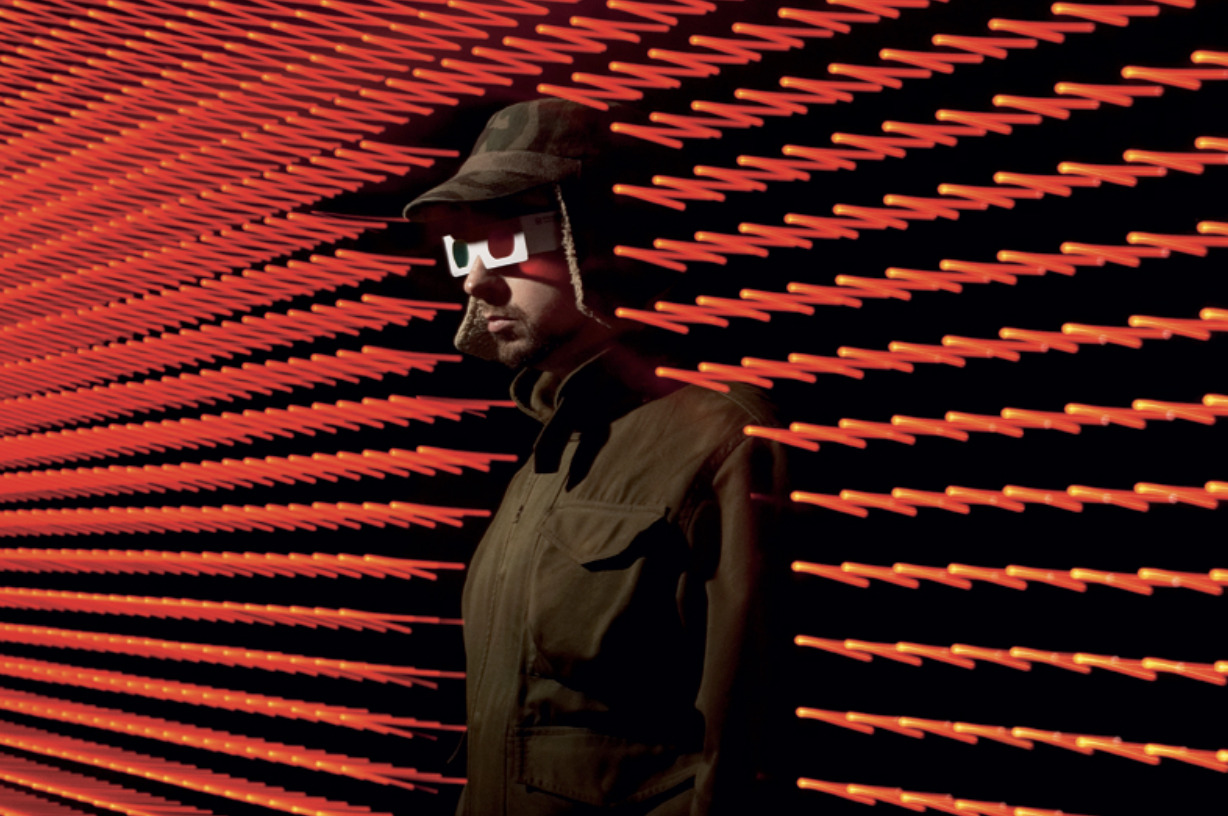Interview by Meritxell Rosell


Steve Goodman (better known as Kode9) is an artist, DJ and founder of the influential record label Hyperdub. Born in Glasgow and a resident of London, Goodman’s career has always been a balance between music and academia. Goodman began DJing while studying Philosophy in Edinburgh. When he moved to the University of Warwick to follow up with a PhD in Philosophy, he became largely influenced by jungle music, a movement known for its frantic sound that originated from rave culture.
This sound is also reflected in the artist’s intellectual interests. In Warwick, he became involved with the interdisciplinary project Cybernetic Culture Research Unit (CCRU). CCRU was incepted as a secessionist movement within the Department of Philosophy. It took Inspiration from a talk from cultural theorist Kodwo Eshun (of Turner Prize-nominated duo the Otolith Group) and the writings of English philosopher Nick Land. The latter, co-founded CCRU along with Sadie Plant, with other members like Mark Fisher, author of Capitalist Realism and Anna Greenspan, now a specialist in Sino-modernism.
CCRU members were interested in cybernetics, chaos theory, science-fiction and what it meant to exist in a hyper-capitalized society. For Goodman, mixing rave culture with concepts of Afrofuturism, Cybernetics and postmodernism was the base for developing his personal philosophy, which still resonates in his musical inceptions. In 2009, he published Sonic Warfare: Sound, Affect, and the Ecology of Fear. The book, published by MIT, explores the uses of acoustics and how it can have effects on whole populations as well as how sound can be used to induce dread and fear and become a means of torture and threat.
In 2004 the artist founded his record label Hyperdub while still being a lecturer of Music Culture at the University of East London. Hyperdub, which began as a fictional narrative, was (in Goodman’s own words) “an info-virus that replicates in both humans and machines with its most virulent mutations to date as hardcore, jungle and 2-step garage”. The impact of Hyperdub on bass music would need a whole other chapter that we may leave for some other time.
Nøthing, Goodman’s last album (and also the first produced on its own) was released at the end of last year. Loss and absence triggered its inception. As Goodmans puts it, when the cold wind of death decides to blow through your area, it tends to leave a trail of zeros. It was delving further into concepts of non-existence and a book on the history of zero in mathematics that provided revealing insights: the science of zeros and voids, vacuums in quantum theory… and with that, nothing became something tangible.
This year Goodman presented a new audiovisual show, The Nøtel, in collaboration with simulation artist Lawrence Lek. The show revolves around concepts of Nøthing, and Lek brings his eerie visuals and creates experiences and feelings of absence, non-existence, void and such, bringing us a world where it’s hard to imagine anything happening. In times when capitalism has reached its most extreme peaks, new posthumanist and cybernetic movements seem to be raising everywhere, and we are living through confusing and challenging sociopolitical events, the work of Steve Goodman appears to resonate more strongly than ever.
You have a Philosophy background and were involved with the CCRU (Cybernetic Culture Research Unit). CCRU was concerned with issues like post-structuralism, rave culture, cybernetics, bacteriology, chaos theory, science fiction, the occult and their reflection into hyper-capitalised societies. How has this conceptual framework influenced the way you approach music and sound?
There are a few key themes from the CCRU that have stayed with me: Sonic fiction, Hyperstition, Deep Time, taking the co-evolution of capitalism and artificial intelligence seriously, and that cybernetic culture is not just about technology.
I think the key soundtrack to what the CCRU was doing at the time was jungle. For me, these concepts and the music go hand in hand. The available energies are different now, however. Music has moved on, but the ideas are only just beginning to resonate wider.
Your latest project N∅thing revolves around concepts like the mathematical zero, void, absence, emptiness… Could you tell us a little bit about the intellectual process behind it?
Nøthing came from the need to have a concept to circle the album and allow me to start making it, but one that I thought was devoid of content, an empty circle. But the more I thought about nøthing, the more it filled up. Out of the void sprung its many names.
The N∅tel is an a/v set based on your last album, N∅thing, which you developed in collaboration with Lawrence Lek. What were the biggest challenges you faced in its development? How did you translate the central concepts in the album (zero, void…) into images and motion?
The visualisation of Nøthing emerged from the key themes of full automation and nothingness. An early obsession with green glass as an index of luxury had started to emerge already in the artwork for the album designed by both Optigram and Lawrence. Based on these clues, Lawrence designed the Nøtel architecture.
To fuse this virtual world with the music then became an issue of fine-tuning the ambience, colour and texture of the movement through the building. As is clear when inhabiting the Nøtel, the scaffolding that holds it together is the convergence of the angular freestanding staircases and the rhythm patterns of the music.
What direction do you see taking your work into?
I’m currently working on the muzak that is playing in The Nøtel on a day-to-day basis. Generally, I’m currently interested in sonifying hypersition and bodily vibration thresholds.
What’s your chief enemy of creativity?
Email.
You couldn’t live without…
Something.






